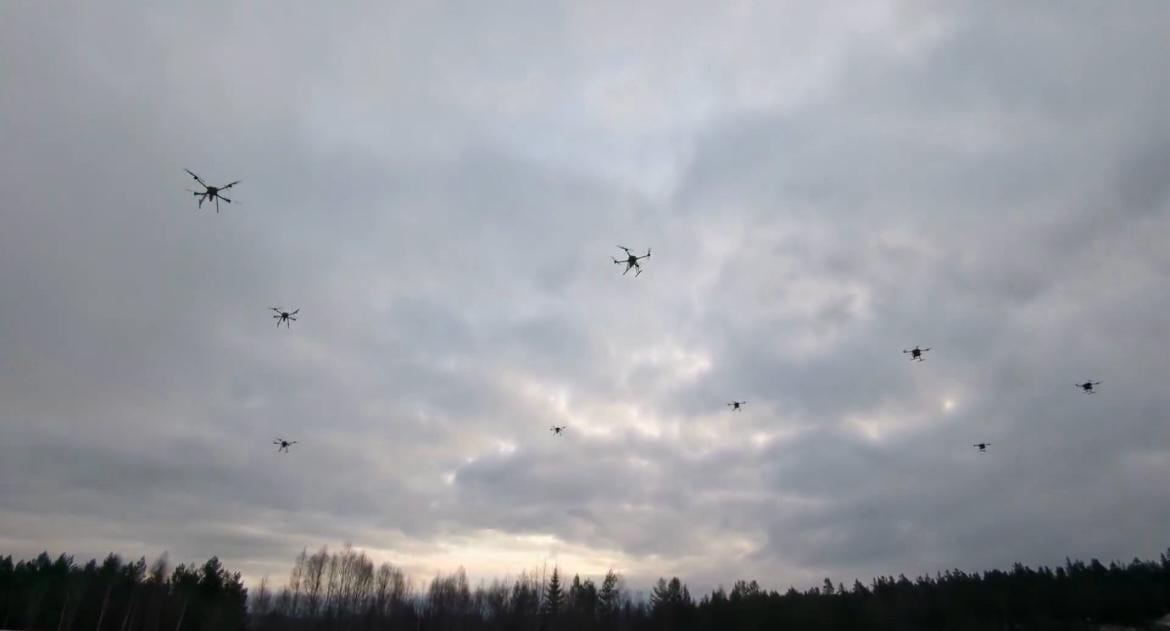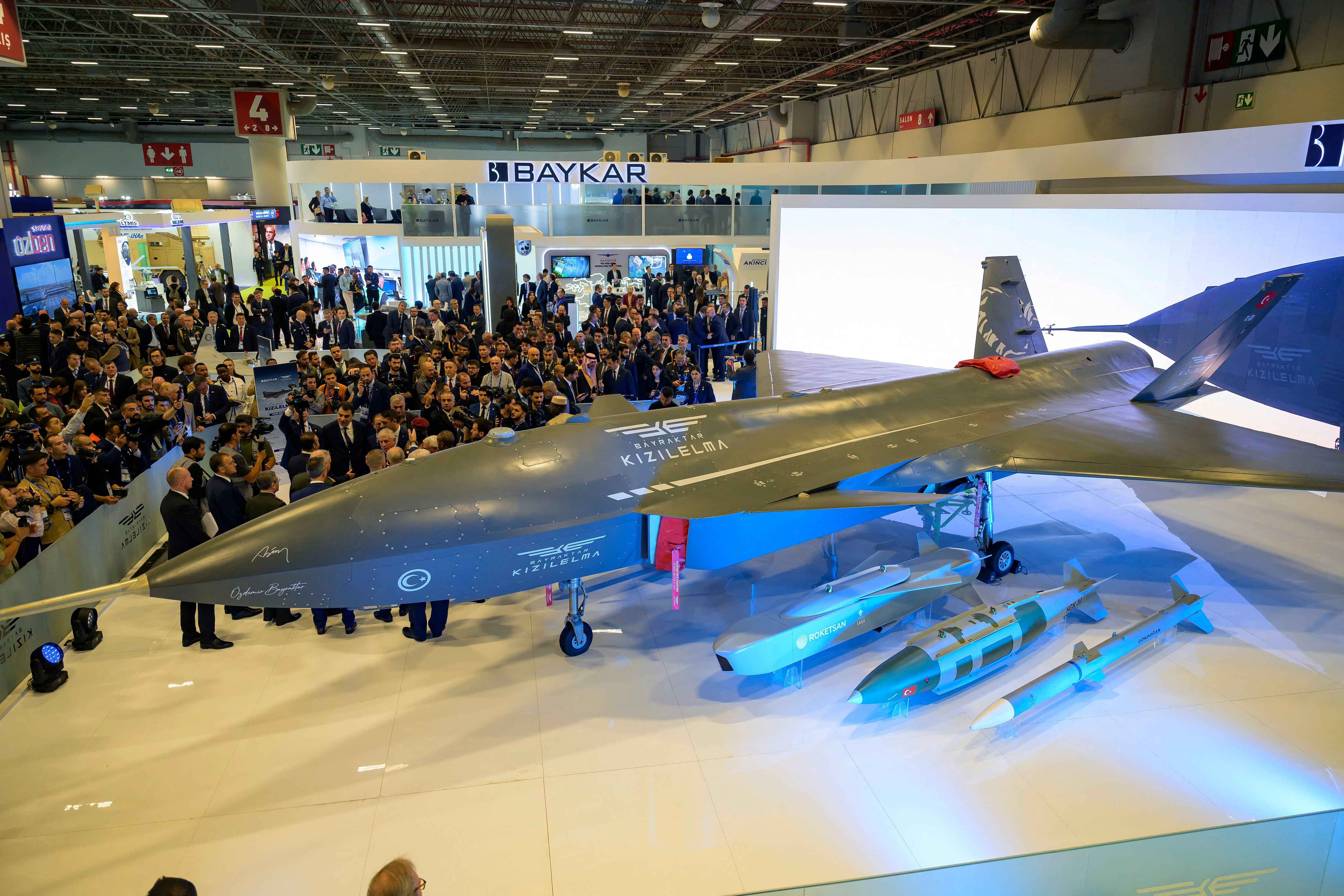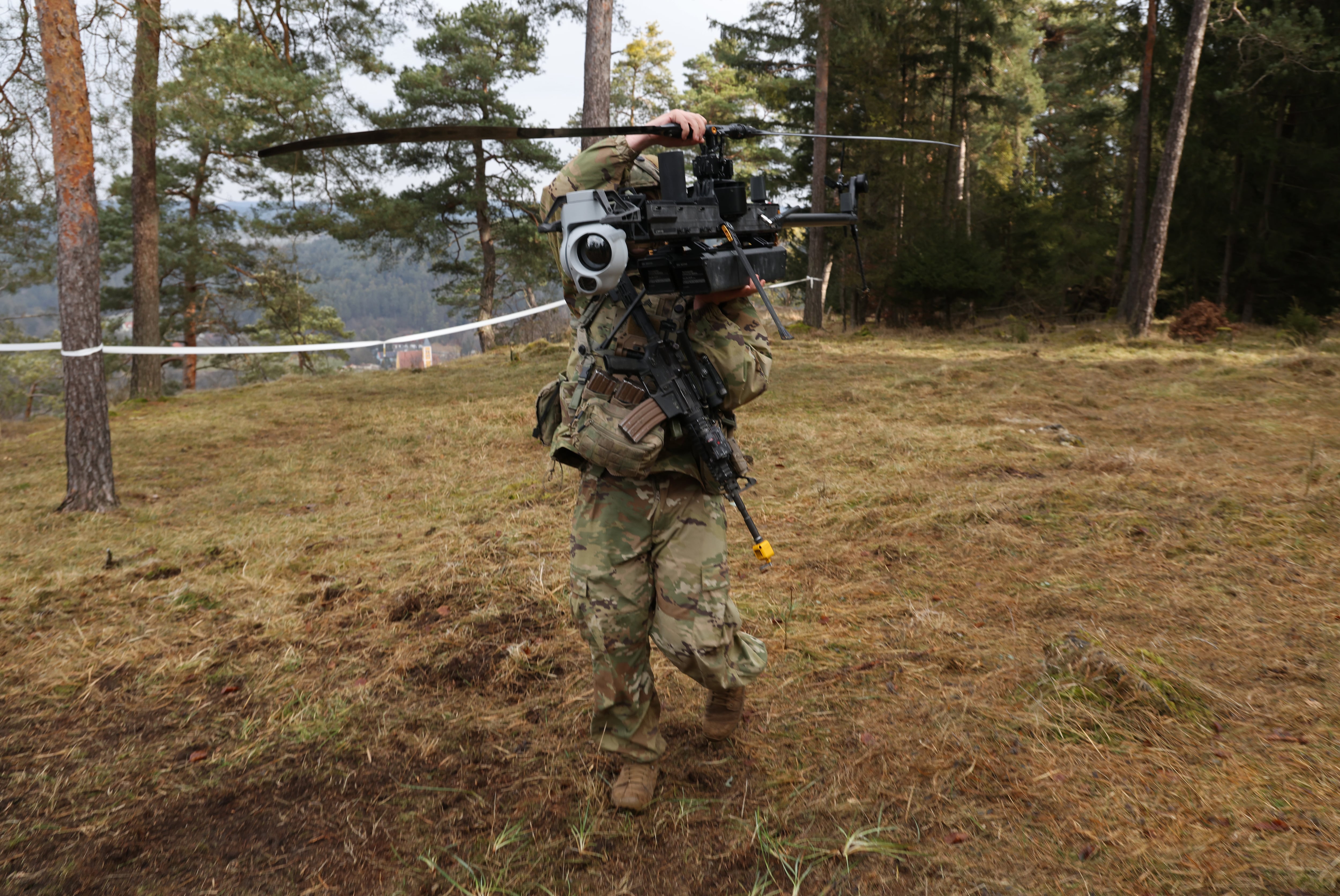The U.S. Army is slated to begin its first integration of an unmanned ground vehicle, or UGV, produced by the Defense Advanced Research Projects Agency into an autonomous breaching demonstration at the end of this month.
The 36th Engineering Brigade, which is preparing for the upcoming Machine Assisted Rugged Soldier, or MARS, autonomous demonstration later this month, will use the DARPA RACER Heavy Platform vehicle for mine clearing by pairing it with a M58 MICLIC — a rocket-projected mine clearing line charge used to clear direct passages for combat personnel through minefields. The open-source defense intelligence outlet Janes was the first to report on the UGV integration.
The Army engineers first began conducting exercises with the UGV at the beginning of October, successfully using the vehicle to tow a trailer for the first time. The vehicle has also been prepped with an upgraded user interface produced by Overland AI.
The RACER Heavy Platform vehicle, first put to the test by DARPA in 2023, is designed to be both robust and maneuverable across challenging terrain.
At 20 feet long and with a weight of 12 tons, the UGV operates by moving on skid-steer tracks and is capable of much higher speeds when compared to other tracked vehicles, and can easily negotiate rugged environments.
Dr. Stuart Young, program manager in DARPA’s Tactical Technology office, said in a podcast released this summer that the design of the unmanned vehicle is geared toward providing additional battlefield options while mitigating personnel casualties.
“The reality is, combat vehicles especially will have to maneuver in terrain that is highly complex off road for tactical survivability reasons,” Young said on the program. “In combat, the roads or terrain will obviously continue to be degraded through the activity of both sides, and so consequently, you have to deal with that. You know, if roads are out or bridges are out, it’s like, okay, well then deal with it.
“So, we have to have the flexibility to have our maneuver forces be able to drive wherever they need to,” he continued. “And we don’t want them to be constrained to roads and trails.”
Young added that autonomous vehicles could serve numerous roles, including helping troops who are fighting counterinsurgencies avoid being injured by IEDs — which has historically been a common and favored tactic used by insurgent groups.
In this case, the RACER platform would reduce the need for direct human involvement in minefield clearing and would mitigate potential casualties.
Zita Ballinger Fletcher previously served as editor of Military History Quarterly and Vietnam magazines and as the historian of the U.S. Drug Enforcement Administration. She holds an M.A. with distinction in military history.








